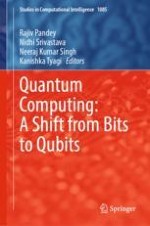2023 | OriginalPaper | Buchkapitel
Entangled Quantum Neural Network
verfasst von : Qinxue Meng, Jiarun Zhang, Zhao Li, Ming Li, Lin Cui
Erschienen in: Quantum Computing: A Shift from Bits to Qubits
Verlag: Springer Nature Singapore
Aktivieren Sie unsere intelligente Suche, um passende Fachinhalte oder Patente zu finden.
Wählen Sie Textabschnitte aus um mit Künstlicher Intelligenz passenden Patente zu finden. powered by
Markieren Sie Textabschnitte, um KI-gestützt weitere passende Inhalte zu finden. powered by
